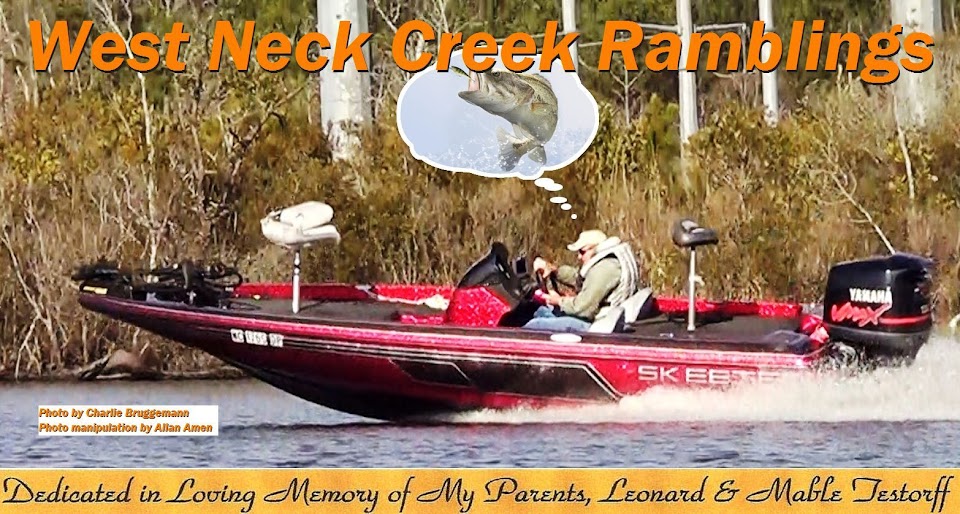"They assume that noise profiles are relatively subtle and that any variations are inconsequential. That's a mistake, though," according to Evers. "Something like a lipless crankbait is crazy loud, as anyone who's ever listened to one in a pool knows."
He went on to explain that, throughout his career, he has attributed much of his incremental success to understanding the impacts all five senses have on his prey's willingness to strike.
"I'm the guy who turns his depthfinder off when he's fishing, the one who considers the differences in the sound that braid and fluorocarbon make sliding through the grass," said Evers. "It all makes a difference."
"The amount of noise you want to generate has to be calibrated to fishing pressure, water clarity, and to some extent, wind, all of which work to affect the aggressiveness of the fish on a given body of water," continued Blaukat, who, over time, has become convinced that anglers don't catch near the number of fish that see their jerkbaits. "Fish will come up and study them. They'll come within inches and not hit them. When you get a fish in that sweet spot, at the point where they have to make a decision, there definitely are times when noise turns them off.
"That's why the pros got so excited about the introduction of the 110 Silent, a lure that shares the outward appearance and exquisite finishes of its predecessors, but without the built-in sound-making devices," he said. "The functional differences may not be outwardly apparent, but they are the result of concerted engineering effort by the Megabass R&D team."
"We removed the internal rattles, thereby eliminating the majority of the rattling noise," said Kenichi Iida, product manager for Megabass America. "And instead of equipping the lure with a weight transfer system, which generates a very loud 'knock' when the lure is jerked, we have a fixed weight to keep the lure balanced while remaining highly castable."
Blaukat long has been a fan of the Megabass Silent Riser, a similarly quiet lure but one which was designed to float with its head up, targeting a shallower range than the renowned Vision 110. He tried to weight the Silent Riser to get it to suspend but never could get the same action out of it as the original 110, particularly when the water was clear and under 50 degrees. Getting that storied action and extra bit of depth were key.
The Vision 110 Silent solved these issues, preserving the action, head-down posture, running depth, and suspend setting of the original. Subsequently, you often found both versions of the 110 on the deck of Blaukat's boat to see which the fish preferred a particular day or hour. When there was a strong reaction-bite, rattles could be a positive, but when the fish were fickle or had been heavily pressured, silence often was golden. Also, when the fish weren't aggressive, Blaukat frequently would reel the bait a lot, almost like a swimbait.
Bucking the preferences of many other pros, Blaukat uses spinning gear for about 98 percent of his jerkbait presentations, turning to baitcasting gear only for super-shallow, larger-than-average bass in heavy-cover situations. Spinning tackle allows him to use lighter line, which, in turn, reduces the effect of wind and current while allowing for longer casts, all of which provides a crucial advantage when stealth is of the essence.
When it comes to performance-proven colors, Evers typically has a few natural colors on the deck, including mat shad and Megabass gizzard shad, along with elegy bone. He also makes sure to have one really loud color available, and he'll go back through an area an extra time to throw that one, too, before leaving.
The 110 Silent never was meant to disparage the original 110. Rather, it was designed to help anglers learn to "maximize water." In other words, if you roll through an area with an original 110 and catch a couple, you should make a second trip through with the Silent version to maximize the area's potential.
Each bait is just a tool, and when you're on a hard-core jerkbait bite, you have to be able to offer the fish options. Nobody knows for sure what generates a strike, so you have to go through a process of experimentation with cadence, retrieve, depth, color, and sound to figure out what the mood of the fish is at the time you're there.




















.JPG)




.jpg)
.JPG)